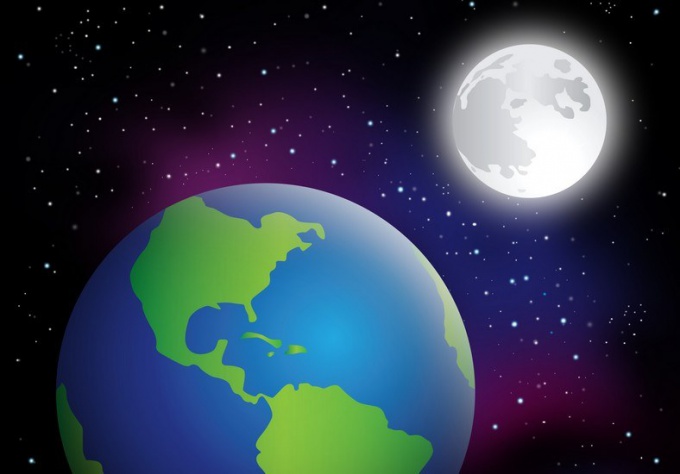The distance between the luminaries and change it
The diameter of the moon (3474 km) slightly more than 1/4 the diameter of Earth. Thus, the Moon is many times lighter and 6 times stronger gravity than Earth. The force of mutual attraction between them causes the moon to move in an orbit around the Earth. Satellite completely orbits the planet in 27.3 days.
The distance between the centers of the moon and the Earth is 384,467 km, which is approximately equal to the amount of 30 Earth diameters. Every year, however, the moon is from the planet almost 4 see the Reason for this constant decrease of the force of gravity between celestial bodies that occur due to energy losses in the system Earth-Moon.
Because the Moon is closer to Earth and has a relatively large mass, between celestial bodies occurs the gravitational interaction in the form of tides that occur on the coast of the oceans, in different reservoirs and the earth's crust. Because of them between the bottom and the oceans, the mantle and the crust occur friction, which causes loss of kinetic energy in the system Moon-Earth. For this reason, every 120 years for 0.001 seconds lengthened the earth's day.
Given the annual removal from the Earth, its satellite, it is possible to calculate that in a thousand years the Moon will be removed from the planet by approximately 40 meters.
Research in this area
People have tried to measure the distance from the earth to the moon in ancient times. Among them were, for example, the ancient Greek scientist, Aristarchus of Samos. He was wrong about 20 times in their calculations, because the technology of those times did not allow to achieve high accuracy.
Scientists were able to measure the distance between Earth and Moon with minimum error by using laser guns. Also there have been attempts to do this by using photons of light reflected from the mirrors of the moon, but they were unsuccessful.
A physicist from the University of San Diego Tom Murphy wanted to measure the distance with millimeter precision. Together with a team of colleagues when he sent a laser ripple of 100 quadrillion photons to reflectors on the moon. In the best case, only one of them came back, and often the telescope could not fix it. It is assumed that the cause of failure in a distorted path along which the photons return. According to Tom Murphy, the reason for the negligible reverse signal that lunar dust covers the glass prism reflectors.
